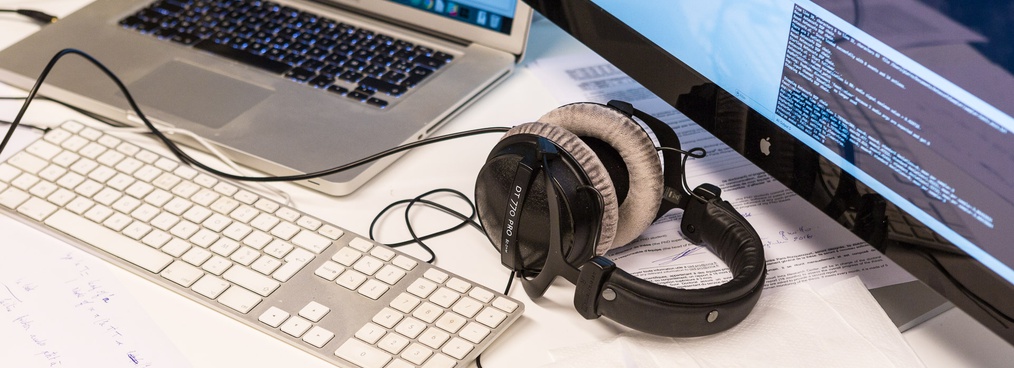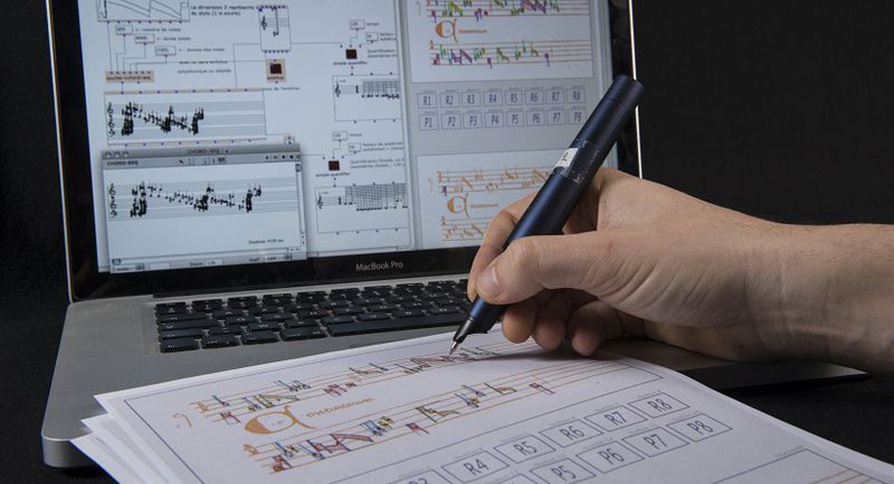L’équipe Représentations musicales travaille sur les structures formelles de la musique et les environnements créatifs pour la composition et l’interaction musicales. Ces travaux mènent à des applications dans les domaines de la composition assistée par ordinateur (CAO), de la performance, de l’improvisation, de l’interprétation et de la musicologie computationnelle. La réflexion sur les représentations de haut niveau des concepts et des structures musicales, appuyée sur les langages informatiques originaux développés par l’équipe, débouche sur l’implantation de modèles qui peuvent se tourner vers l’analyse musicale comme vers la création.
Sur le versant musicologique, les outils de représentation et de modélisation permettent une approche véritablement expérimentale qui dynamise de manière significative cette discipline.
Sur le versant création, l’objectif est de concevoir des compagnons musicaux qui interagissent avec les compositeurs, musiciens, ingénieurs du son… dans toutes les phases du workflow musical. Les logiciels développés ont pu être diffusés vers une communauté importante de musiciens, concrétisant des formes de pensée originales liées à cette caractéristique particulière des supports informatiques qu’ils peuvent représenter (et exécuter) à la fois la partition finale, ses divers niveaux d’élaboration formelle, ses générateurs algorithmiques et interagir dans le vif de la performance.
L’équipe intègre depuis quelques années l’interaction symbolique et la créativité artificielle à travers ses travaux sur l’écoute artificielle, la synchronisation de signaux musicaux et le suivi de partitions (thématique qui a donné lieu à une équipe projet Inria), l’aide à l’orchestration (s’appuyant sur l’analyse des séries temporelles et des techniques d’apprentissage profond) ainsi que l’ingénierie des agents intelligents capables d’écoute, d’apprentissage et d’interaction musicale dans les contextes improvisés.
L’équipe a une longue histoire de collaboration intensive avec des compositeurs et musiciens, qu’ils soient internes ou externes à l’Ircam. Les trois tomes de l’ouvrage OM Composer’s Book archivent ces travaux et garantissent leur diffusion internationale et leur pérennité.
Principales thématiques
- Composition assistée par ordinateur : composition assistée, aide à l'orchestration
- Contrôle de la synthèse et de la spatialisation : systèmes créatifs pour l’écriture du temps, du son, de l’espace et de l’interaction
- Mathématique et musique
- Langages informatiques pour la musique : OpenMusic, Antescofo
- Modélisation du style, dynamiques de l’interaction improvisée : Interactions musicales improvisées, DYCi2
- Nouvelles interfaces pour le compositeur et le pédagogue
- Musicologie et analyse computationnelles
- Recherche efficace du temps synchrone




